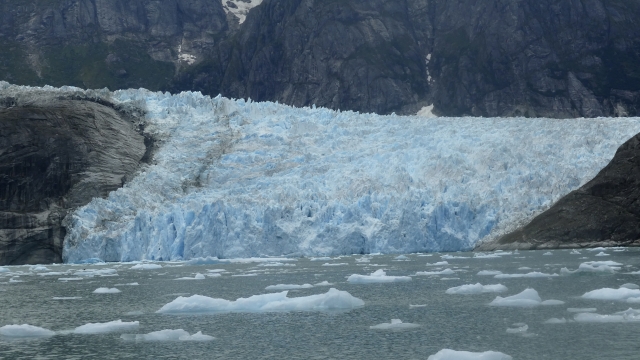"If you have eyes, you see the glacier receding," said Alaska-based Serene Hutchinson.
Hutchinson is the general manager of Juneau Tours and Whale Watch, a company facing the climate change-driven tourism boom in Juneau, Alaska.
"We've talked about this a lot, and it's one of the many reasons why we have developed whale watching as such a large part of our business now, as well as city tours. And I do think things will change," Hutchinson added.
This year, an estimated 700,000 people will be traveling by foot, boat or helicopter to visit Mendenhall Glacier — which is roughly ten miles from the state capital. It's one of more than 660 named glaciers in Alaska, but experts expect it to melt away due to rising temperatures by 2050. Tourists today are scrambling to see the site before that happens.
SEE MORE: Glacial flooding damages structures in Alaska's capital
"It is just a major draw not just for us, but for people all over the world really coming to see it," said Juneau resident Kerry Kirkpatrick. "And I think most of that is the glacier, so when that's gone, I don't know if it will be quite the same draw for them."
"If the glacier is so beautiful now, how would it be, like, 10 or 20 years before? I just imagine that," said cruise ship worker Manoj Pillai.
Already a popular tourist destination, Juneau welcomes as many as 20,000 cruise passengers a day, many hoping to see Mendenhall Glacier during their visit. But residents of the state capital — which has a population of around 32,000 — worry if they can support the congestion of today's tourism boom, as well as a future in which the glacier is gone.
"We did talk about, 'Is it worth the investment in the facilities if the glacier does go out of sight?'" said Tristan Fluharty, the Juneau forest's district ranger. "Would we still get the same amount of visitation?"
Other sites in Alaska have also seen upticks in tourists hoping to see the glaciers before they melt away, but some areas paint a grim picture of the future.
The Portage Glacier of the Chugach National Forest attracted 400,000 annual visitors in the nineties. But last year, with much of the glacier melted away, the site welcomed just 30,000 people.
As the city of Juneau plans on improving the sustainability of its tourism industry, rangers today hope to better educate visitors about climate change and its effects on the state's glaciers.
Trending stories at Scrippsnews.com



